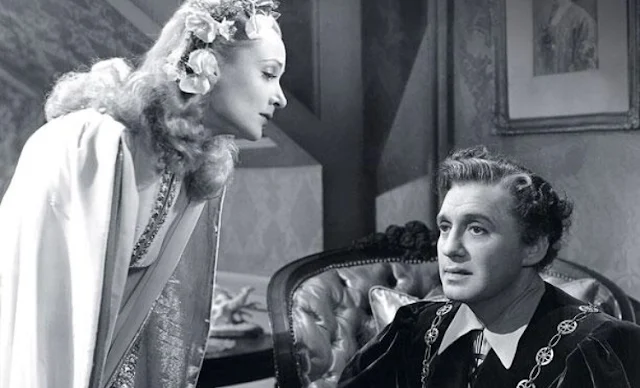 |
| Patricia Collinge, Teresa Wright, Joseph Cotten, Henry Travers, Charles Bates, Edna May Wonacott in Shadow of a Doubt |
Charlie Newton: Teresa Wright
Charlie Oakley: Joseph Cotten
Jack Graham: Macdonald Carey
Joseph Newton: Henry Travers
Emma Newton: Patricia Collinge
Herbie Hawkins: Hume Cronyn
Louise Finch: Janet Shaw
Director: Alfred Hitchcock
Screenplay: Thornton Wilder, Sally Benson, Alma Reville, Gordon McDonell
Cinematography: Joseph A. Valentine
Art direction: John B. Goodman
Film editing: Milton Carruth
Music: Dimitri Tiomkin
In high school I appeared in a production of Thornton Wilder's play
Our Town, playing three roles: In the first act I was Professor Willard, who comes on stage to bore the audience with facts about the town of Grover's Corners, which, he says, "lies on the old Pleistocene granite of the Appalachian range" and is largely populated by "English brachiocephalic blue-eyed stock." I have no doubt that, as the class nerd, I was chosen for my ability to pronounce "Pleistocene" and "brachiocephalic," but I also played a newsboy tossing imaginary newspapers on imaginary front porches in the second act, and in the third I was the Second Dead Man, who sits in the cemetery waiting to speak his one line: "A star's mighty good company."
Our Town has always been a good choice for amateur theatrics because it's inexpensive, designed to be performed with no scenery other than some chairs, a couple of trellises, and a stepladder, but it was especially good for high schools in the 1950s because it was
clean. No sexual innuendo, no profanity. Our straitlaced principal, Dr. Brubaker, acted as censor on all of the school plays, and the only thing he found an objection to was the alcoholic choirmaster Simon Stimson, so the director, our English and dramatics teacher Mr. Wilson, had to threaten our Simon, Billy Cavanaugh, every now and then when he started to play drunk. I mention all of this because Wilder's
Our Town looms large over Alfred Hitchcock's
Shadow of a Doubt. Wilder wrote the first draft of the screenplay, based on a story idea by Gordon McDonell. The screenplay was revised and completed by Sally Benson (author of the
New Yorker stories that were the basis for Vincente Minnelli's 1944 musical
Meet Me in St. Louis) and Hitchcock's wife, Alma Reville, after Wilder left for service in World War II, but it's his benign vision of small town life that informs the Santa Rosa of
Shadow of a Doubt. Hitchcock even paid tribute to Wilder with a separate on-screen credit in the film's opening. The premise of
Shadow of a Doubt is essentially: What if a serial killer showed up in Grover's Corners? What better place to hide out from the cops than in the bosom of one's own "average American family," as the Newtons of Santa Rosa are said to be? Instead of Hitchcock's frequent "wrong man" plot device, what we have here is the wrong place, the tension being developed from Uncle Charlie's threat to small town tranquility. Hitchcock is often quoted as saying
Shadow of a Doubt was one of his favorite films, and there's much to admire in it, especially the performances. As Uncle Charlie, Joseph Cotten, with his quick turns from joviality to menace, is splendid, and Teresa Wright as his namesake niece makes the most of their odd emotional connection: If Uncle Charlie is psychotic, Young Charlie is at least neurotic, especially in her often frantic and edgy attempts to launch her own investigation, either to prove or disprove her uncle's guilt. Patricia Collinge is also superb as the mother who has to be protected from the truth about her brother, lest the whole family structure that depends on her hard work and common sense collapse. Henry Travers as the father and Hume Cronyn as his mama's-boy friend provide the necessary macabre comedy in their schemes to bump each other off. But I think the film is undermined by the unnecessary introduction of a love story between Charlie and the detective Jack Graham. It's inserted into the film too abruptly, almost in a cut between scenes: All of a sudden Charlie has not only figured out that Graham is a detective but she has also fallen for him. A more interesting actor than Macdonald Carey might have made it plausible, but his affable Graham doesn't feel like an appropriate match for the intensity that is Charlie. Grover's Corners was no paradise, as the third act of
Our Town demonstrates, and Uncle Charlie is perhaps not the only serpent in Santa Rosa: The scene in which the two Charlies go to a smoky dive and encounter the waitress Louise, a schoolmate of Young Charlie's who has fallen on hard times and looks longingly at the ill-gotten emerald ring her friend is wearing, is an effective counterpoint to the folksiness and bonhomie on the small town surface. I think the film could have benefited from a bit more of the dark underside of Santa Rosa and a bit less of its superficial geniality.

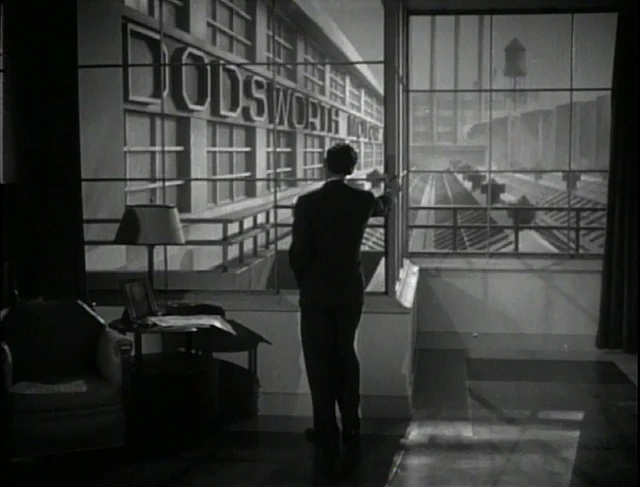

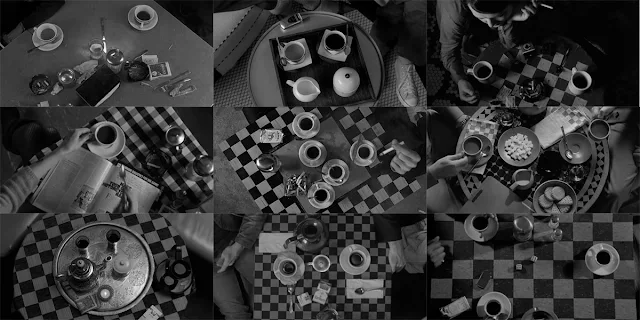


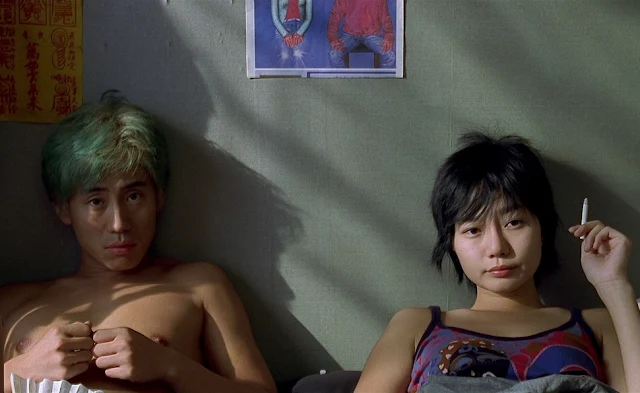














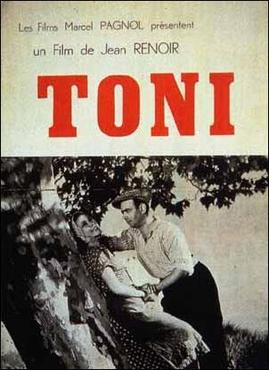

.png)
